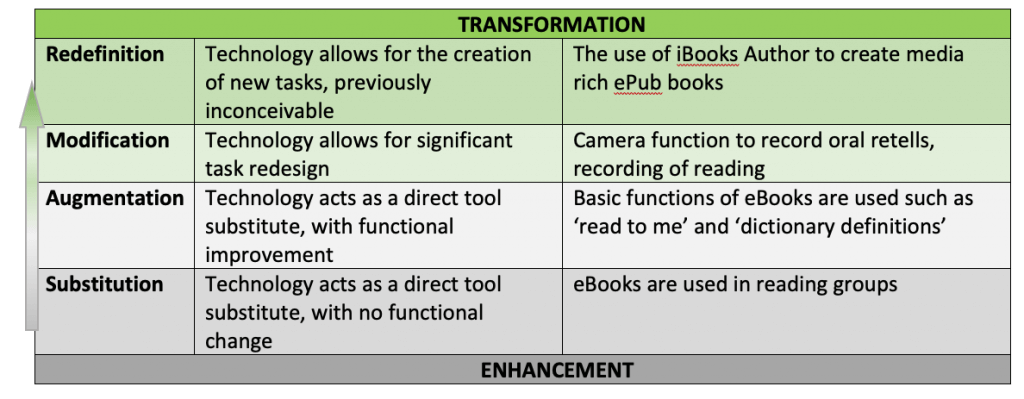Self expression & acting
Technology Integration

Technology Integration – the SAMR Model
As a Technologies Teacher Development School (TDS), WLPS prides itself on the effective integration of technologies, including iPads as part of the BYOD program.
A key feature of the WLW is the use of the Substitution, Augmentation, Modification and Redefinition (SAMR) model. This model is a four-level approach for selecting, using and evaluating technology in K-12 settings. It is underpinned by the premise that the mere presence of digital tools in the classroom does not result in effective technology integration.
According to the Department of Education WA, technology integration at the substitution or augmentation levels only slightly enhances student learning. Although students may be engaged while using technology, the use of the device remains defined and limited. This can be thought of as ‘using technology just for the sake of using it’. In contrast, when technology is used at the modification or redefinition levels, it can promote higher-order thinking, the use of creative and critical thinking skills, problem-solving and collaboration. Ultimately, technology integration in the two highest phases results in transformational learning.
At WLPS, teachers aim to transform learning by significantly redesigning tasks or creating new tasks that were previously inconceivable. Those that are part of BYOD classrooms plan to regularly use iPads in ways that modify or redefine learning experiences. Our teachers use the SAMR model to plan for the use of technologies across the learning areas, and to critique their use of technologies.
The following table explains the SAMR continuum and provides examples as to how technology may be used at each of the different levels in a literacy program. It is courtesy of Ruben R. Puentedura, Ph.D., as cited by the DoE.

